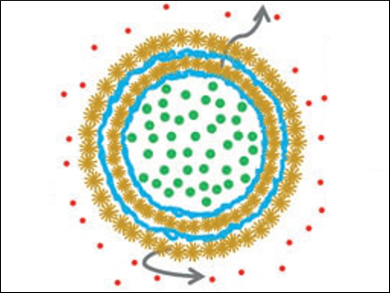The use of stimuli-responsive materials for the fabrication of drug-delivery systems, such as microcapsules, enables drug release at desired locations and times upon applying external stimuli. This is highly desirable for the treatment of many diseases. For the treatment of complex health issues, the delivery of multiple drugs in a programmed way can be critical.
In the treatment of wounds, for example, it is desirable to deliver a hemostat to stop the bleeding first, and then have a sustained release of antibiotics to prevent infection. However, the challenges in the encapsulation of dissimilar drug components mean that most of the existing drug-delivery systems are unsuitable in this regard.
Vladimir V. Tsukruk, Georgia Institute of Technology, Atlanta, USA, and colleagues have developed multicompartmental responsive microcapsules with the capability for the preprogrammed sequential release of multiple cargo molecules with different properties in a controlled manner. Hydrophobic molecules are contained in the microcapsule shell, and hydrophilic molecules are loaded into the core (pictured).
The release of the hydrophobic and hydrophilic molecules can be controlled by variation of the temperature and pH value, respectively. The release sequence of the two types of molecules can be reversed by changing the order of pH or temperature variations. The robust multicompartmental microcapsules have promising potential applications in the programmed delivery of multiple drugs, self-healing materials, and responsive microreactors.
- Multicompartmental Microcapsules with Orthogonal Programmable Two-Way Sequencing of Hydrophobic and Hydrophilic Cargo Release,
Weinan Xu, Petr A. Ledin, Zacharoula Iatridi, Constantinos Tsitsilianis, Vladimir V. Tsukruk,
Angew. Chem. Int. Ed. 2016.
DOI: 10.1002/anie.201600383




